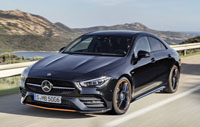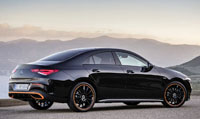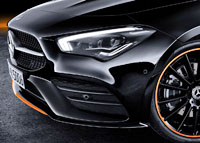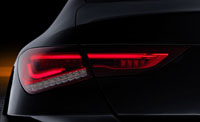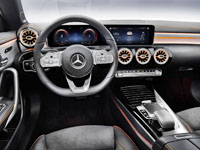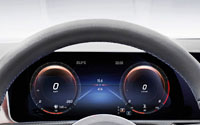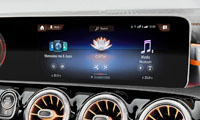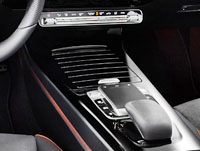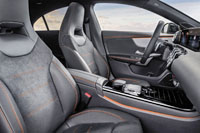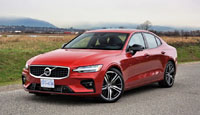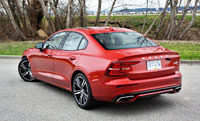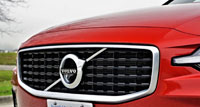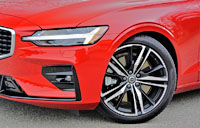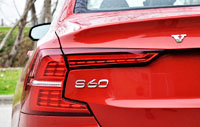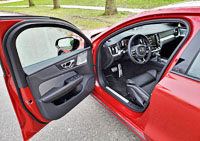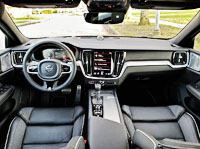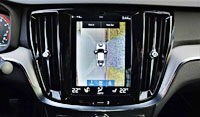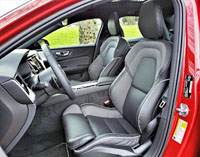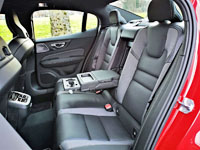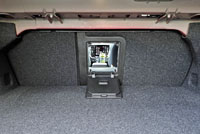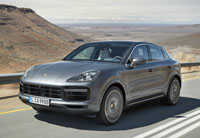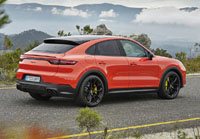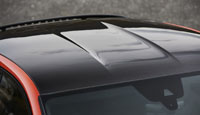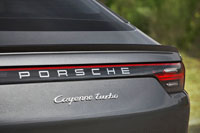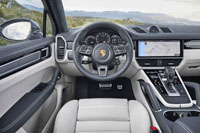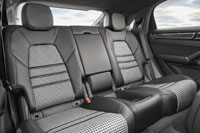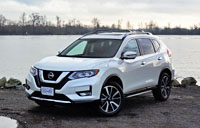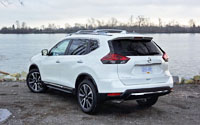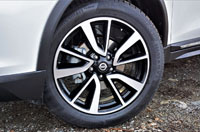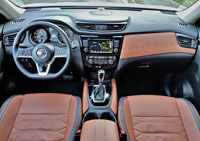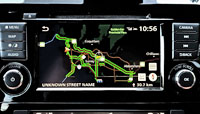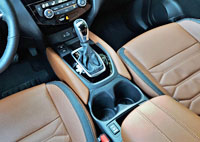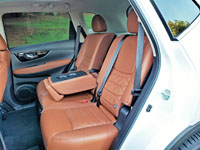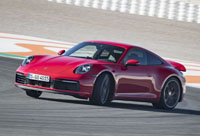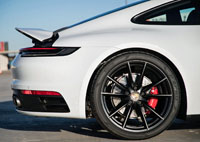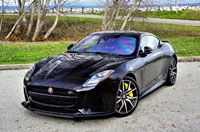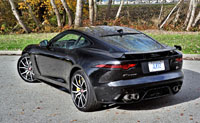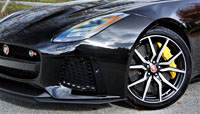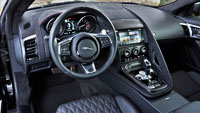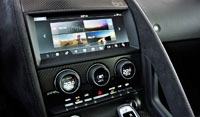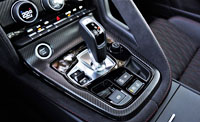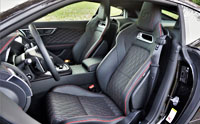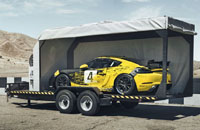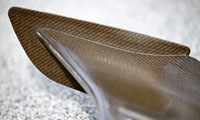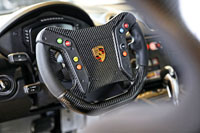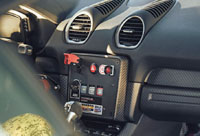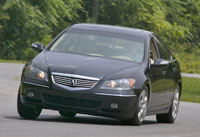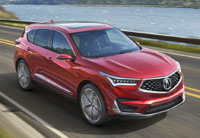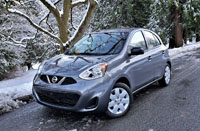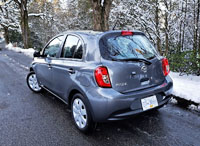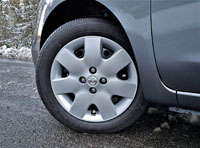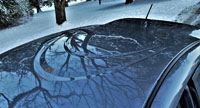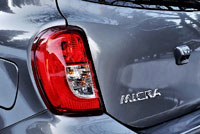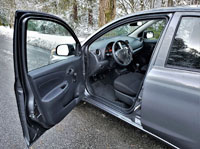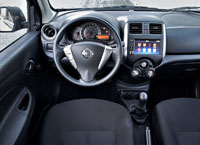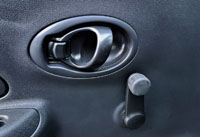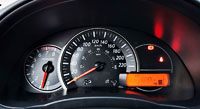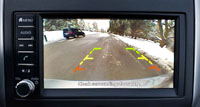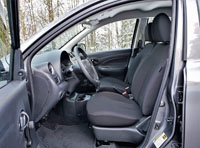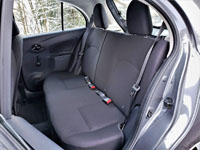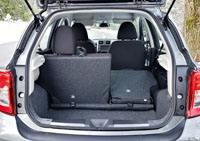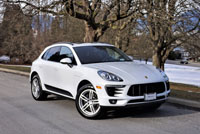
I was a bit surprised. After all, it was mid-March of 2019 when Porsche handed me a set 2018 Macan keys. Realizing the 2019 model was still en route and that plenty of 2018s were left on Canadian dealer lots due to the refreshed version arriving quite late in the year, I figured I might as well extend my usual past model-year writing deadline to Q2, the furthest I’ve ever pushed it out before. Fortunately for me the 2019 Macan isn’t a wholesale redesign, with the new model only receiving some styling, mechanical and infotainment mods that I’ll share toward the end of this review.
Most should agree the Macan is one of the premium SUV segment’s sportier performers, whether we’re talking 2018 or 2019 model. Of course, it’s up against some formidable competitors, but thanks to a bevy of turbocharged engines and some sublime suspension tuning, few rivals come close to matching the fun factor of Porsche’s most affordable model.
Even this base Macan provides a more engaging experience than most challengers, its growly engine and exhaust note making this immediately clear upon leaving my pickup location, and the wonderfully quick and precise response from its paddle-shift actuated seven-speed dual-clutch automated PDK transmission, transforming what appears to be a totally normal compact crossover SUV on paper into a rarified sports model in real life.
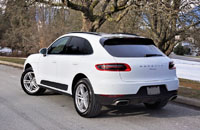
In base trim the Macan includes a turbocharged, direct-injected 2.0-litre four-cylinder engine capable of 252 horsepower and 273 lb-ft of torque, which like I just said is about average for the segment, at least when comparing the first number. Still, along with its sportier than average feel it manages to zip from zero to 100km/h in just 6.7 seconds, or 6.5 seconds when optioned out with the available $1,500 Sport Chrono Package, which includes Sport and Off-Road modes, as well as launch control and a unique performance display inside the infotainment interface. Part of the Macan’s off-the-line prowess can be attributed to standard Active all-wheel drive, which adds considerable control no matter the road or weather conditions.
My Macan tester not only left the Sport Chrono Package off its build sheet, it didn’t include the available $1,560 Porsche Active Suspension Management (PASM) system either, which features an electronically variable active damping system incorporating Comfort, Sport and Sport Plus modes, nor the yet more upscale $3,140 Air Suspension that features PASM too, or for that matter a few other performance upgrades that could’ve also been included, but just the same it was a blast to drive, with strong acceleration and fabulous road-holding when pushed hard through high-speed curvy stretches of roadway, its standard aluminum double-wishbone suspension up front and multi-link setup in back doing a commendable job of respecting the legendary Porsche name.
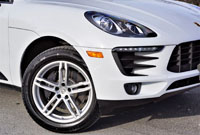
Featured found on my test model included a $790 Lane Change Assist system, which warns when leaving a given lane, veering off the side of road, or when another car pulls alongside when flashing a turn signal. An additional $790 bought Lane Keeping Assist, which automatically takes over at speeds of 65 km/h or greater when such just noted instances occur, while my test model also had $1,650 dynamic cruise control, the feature I prefer most of all due to often driving long distances to see family.
Additional options included a gorgeous $2,230 Garnet Red leather package that also included $1,960 memory-equipped 14-way power-adjustable front seats. I should also mention these improved-upon seats (in black) are part of the $7,250 Premium Package Plus which was also featured on my test model (which can be further upgraded to include $430 18-way Adaptive Sport Seats) that features proximity entry with push-button start, auto-dimming outside mirrors, a large panoramic moonroof, 3-way cooled front seats, 3-way heated rear seats, great sounding Bose surround audio (or alternatively you can get an awesome 1,000-watt 16-speaker Burmester surround system for $5,370 in the same package), HID headlamps with the Porsche Dynamic Light System (PDLS) (or you can add $1,340 more for LED headlights), while my tester also included $1,890 19-inch Macan Turbo alloys clad in 235/55R19 Pirelli rubber, and finally $440 black roof rails, with all the extras adding up to $14,250 for a final tally of $68,350 plus freight and fees.
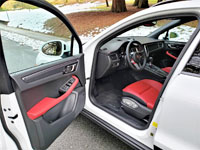
Of course, this being a Porsche I haven’t come close to sharing everything that’s available if you choose to go for the gusto, or for that matter everything issued as standard fare with the $54,100 base model, the latter including 18-inch alloys, fog lamps, LED taillights, an electric parking brake, one of the best heated leather multifunction steering wheels in the luxury business (its ultra-thin spokes and excellent switchgear way above average), a colour multi-info display within the gauge cluster that provides a navigation map when selected, rain-sensing windshield wipers, a garage door opener, 3-way heated and 8-way powered front seats, three-zone auto HVAC, a 7.2-inch centre touchscreen with navigation and a reverse camera featuring dynamic guidelines, front and rear parking sonar, HD and satellite radio, a powered tailgate, etcetera.
The Macan’s cargo compartment is sizeable at 500 litres (17.6 cubic feet), but I appreciate its highly functional 40/20/40 split-folding seatbacks even more as it long times like skis at centre when all four seats are taken, while both rear passengers can enjoy the benefit of the aforementioned rear bum warmers. Remove the standard cargo cover, lower the rear seats, and 1,500 litres (53.0 cubic feet) of gear-toting space becomes available, meaning this ultimately sporty compact SUV is plenty practical too.
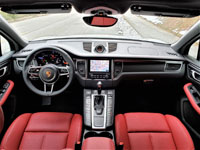
Yes, I know it’s hard to put one’s pragmatist hat on when talking about a Porsche, especially considering how beautifully finished the Macan’s interior is. The dash top, which was detailed out in a lovely black leather with red stitching, looked fabulous, and the quality of the pliable composite used to wrap the lower portion of the instrument panel and all surfaces under the dash, glove box lid and lower console sides included, was superb. As you might expect the Macan’s doors are surfaced with a combination of leather and premium synthetics, from the very top of their uppers to their lower extremities, while classy satin-silver aluminum accents can be found just about everywhere.
The Macan thoroughly comfortable as well, this partially due to the aforementioned 14-way powered seats that provided all the adjustments needed, including 4-way lumbar support and lower seat cushions that extend to cup below the knees. Ample steering column reach and rake put me in total control too, not to mention absolute comfort despite my long-legged, short torso frame. I found the rear seats comfortable too, especially with respect to the lower back. They were carved out nicely at each window position, ideal for lateral support when the Macan’s driver decides to push the limits.
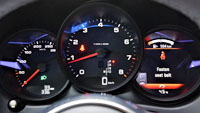
Performance driving in mind, buyers that want stronger acceleration can opt for the Macan S, which includes a twin-turbo 3.0-litre V6 that’s good for 340 horsepower and 339 lb-ft of torque, plus standstill to 100km/h in a mere 5.4 seconds, or 5.2 when upgraded to the Sport Chrono Package. If that’s not enough, the Macan GTS gets an additional 20 hp and 30 lb-ft for a whopping 360 and 369 respectively, which reduces its zero to hero time to 5.2 seconds, or 5.0 seconds with the Sport Chrono Package.
The Turbo (Turbo only referring to model specification, being that all Macans incorporate turbocharged engines) ups the ante with a 3.6-litre twin-turbocharged V6 capable of 400 horsepower and 406 lb-ft of torque, resulting in 0 to 100km/h in only 4.8 seconds, or 4.6 seconds with the Sport Chrono Package.
If more is yet needed, consider the Performance Edition that includes the Sport Chrono Package as standard equipment while adding an extra 40 horsepower and 36 lb-ft of torque for a shocking 440 horsepower and 442 lb-ft of torque for an ultra-quick 4.4-second 0 to 100km/h sprint.
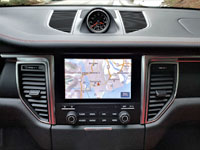
I’m going to guess most in the Turbo league won’t care so much about fuel efficiency, but those who purchase a base model probably will now that the fed’s new carbon pricing scheme is in full force. Standard with all Macan trims is fuel-saving and emissions reducing auto start/stop with coasting ability, which turns the engine off when it would otherwise be idling, this doing its part to assist the Macan toward its estimated 11.6 L/100km city, 9.3 highway and 10.5 combined Transport Canada rating. I’d be fine with this result, particularly when factoring in how fun it is to drive.
If you choose to purchase the 2019 Macan, real-world fuel economy shouldn’t differ at all, but this said the entry-level four-cylinder has been detuned by four horsepower, while second-rung Macan S trim increases its output by eight horsepower. I don’t think such nominal numbers will cause buyers to go one way or the other, but the new Macan is said to deliver a better ride and with even greater agility, which is kind of difficult to believe when factoring in how wonderfully capable this 2018 version is, so rather than speculate I’ll let you know what I experience after I test it.
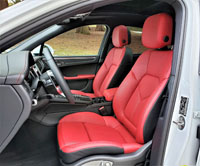
I think more will be drawn to the new model for its outward design, which while only nominally changed up front is now sporting standard LED headlamps, while in back it’s a whole new look due to a similar one-piece three-dimensional LED tail lamp system as found on the recently updated Cayenne. Even more important is the completely revised centre stack found inside, now featuring a much larger standard 10.9-inch high-definition infotainment touchscreen. It gets much of the same standard features as with the current version, but boasts new graphics for updated features that are now larger and easier to use (the navigation map and backup camera especially benefiting), plus it includes a quicker operating processor as well as the new Porsche Connect Plus app suite with a Wi-Fi hotspot.
What’s more, the updated Macan offers a new driver assist system which, through dynamic cruise control, can apply the throttle, brake and make steering adjustments to maintain its lane at speeds under 60 km/h amidst traffic, the semi-autonomous system moving Porsche closer to full self-driving.
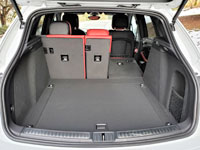
So which one do you want? An already discounted 2018 Macan like the one tested in this review, or the refreshed and updated 2019 version starting to arrive at Canadian Porsche retailers now? There’s no bad decision here, with both options resulting in a great looking luxury crossover capable of impressive performance, top-tier refinement, and no shortage of space, while Porsche’s expected reliability plus resale and residual values are hard to beat as well. Just remember, if you’re leaning toward the former, the time to act is now.
Story credit: Trevor Hofmann
Photo credit: Karen Tuggay

